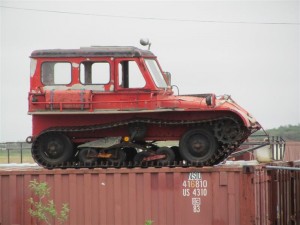Stashes and Triggers
Jul 8th 2011stf6992Business & Life
As I was walking through a village in Alaska north of the Arctic Circle, I smiled when I saw this:
In these villages, nothing is discarded, but instead, things are stashed away just in case they may be needed at some future point either for what they were originally designed and built for or as parts for other things.
In our individual lives we do that as well, not just with goods and materials, but also with things we’ve learned from the past and experiences we’ve gained throughout our lives. Stuff is stashed away – a particular action we took that yielded a desired result; a special gift we gave that provided very special meaning to the one who received it; a slight we felt when someone we loved or respected gave us negative feedback; some words of wisdom we were given by a respected elder or loving family member.
Everything that is stashed away could be used in the future, but much of that stash is pretty much forgotten until and unless a trigger occurs that creates the navigational clarity to where that particular thing is stored. Those triggers occur in many different ways – a question that yanks what’s stashed out of the abyss of our minds; a stimulus that forces us to think back to a lesson learned or something valued; a crisis that forces us to dig deep, remember things that helped us before, and ultimately leverage experiences from the past to prevent a repeat of those adverse experiences in the future.
Ultimately, all that is stashed is recoverable, but much of what’s stashed is not.
Our goal should be to leverage as much of the stash as possible, and clear out all that can’t be leveraged.
Then we can stash more for later.
Because the stash is ultimately finite.
And so are the triggers.
So stash away.
Then clear the stash.
And focus on the triggers!
